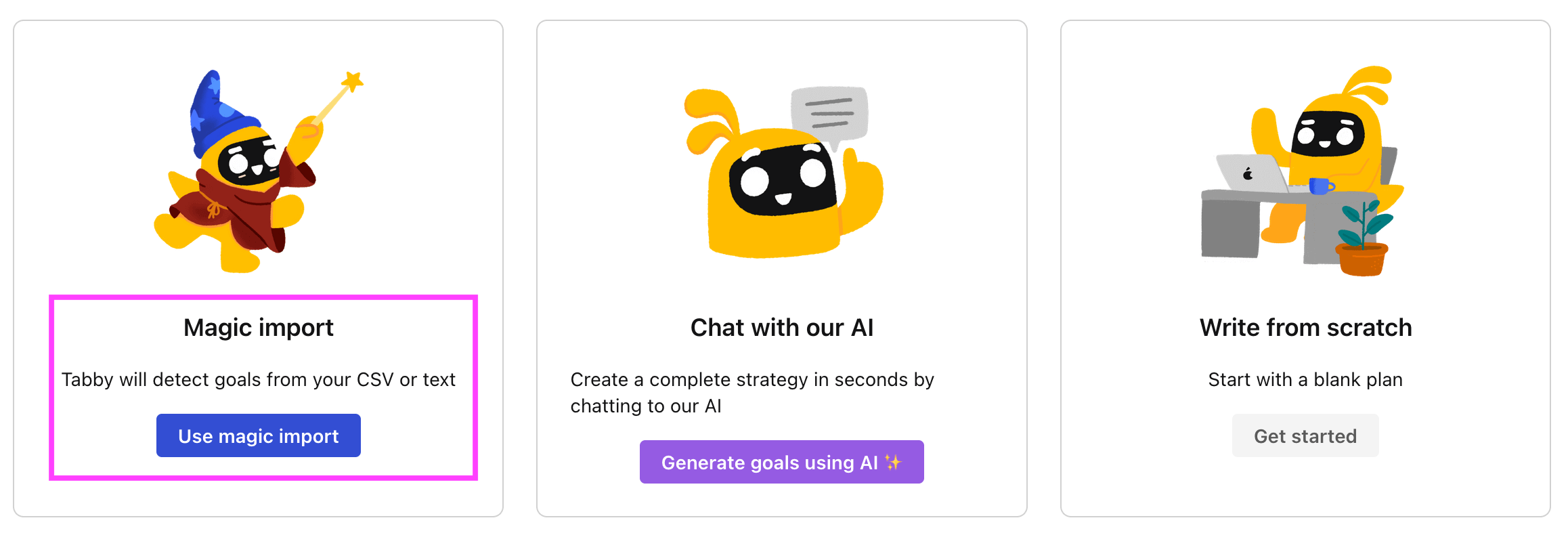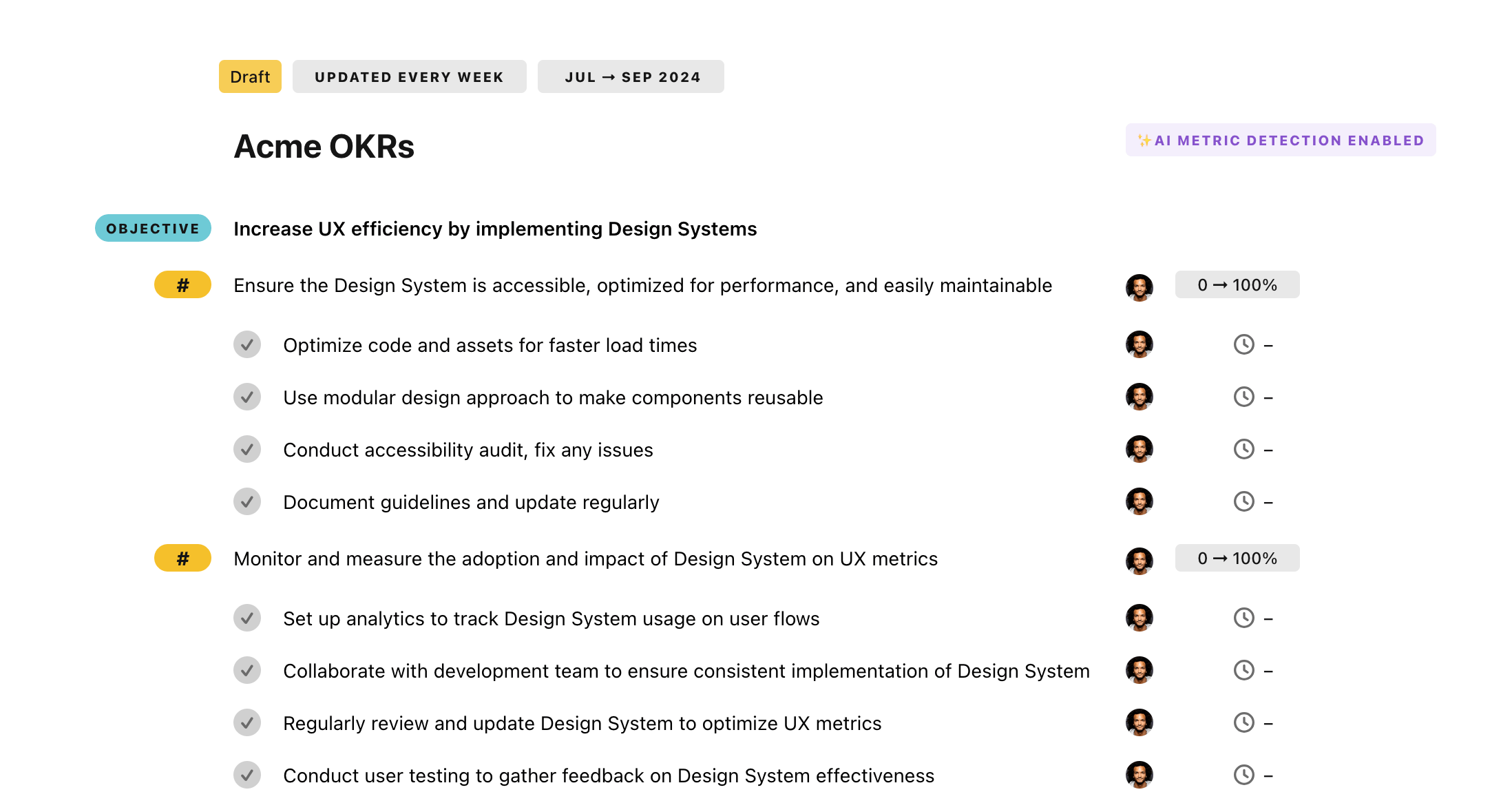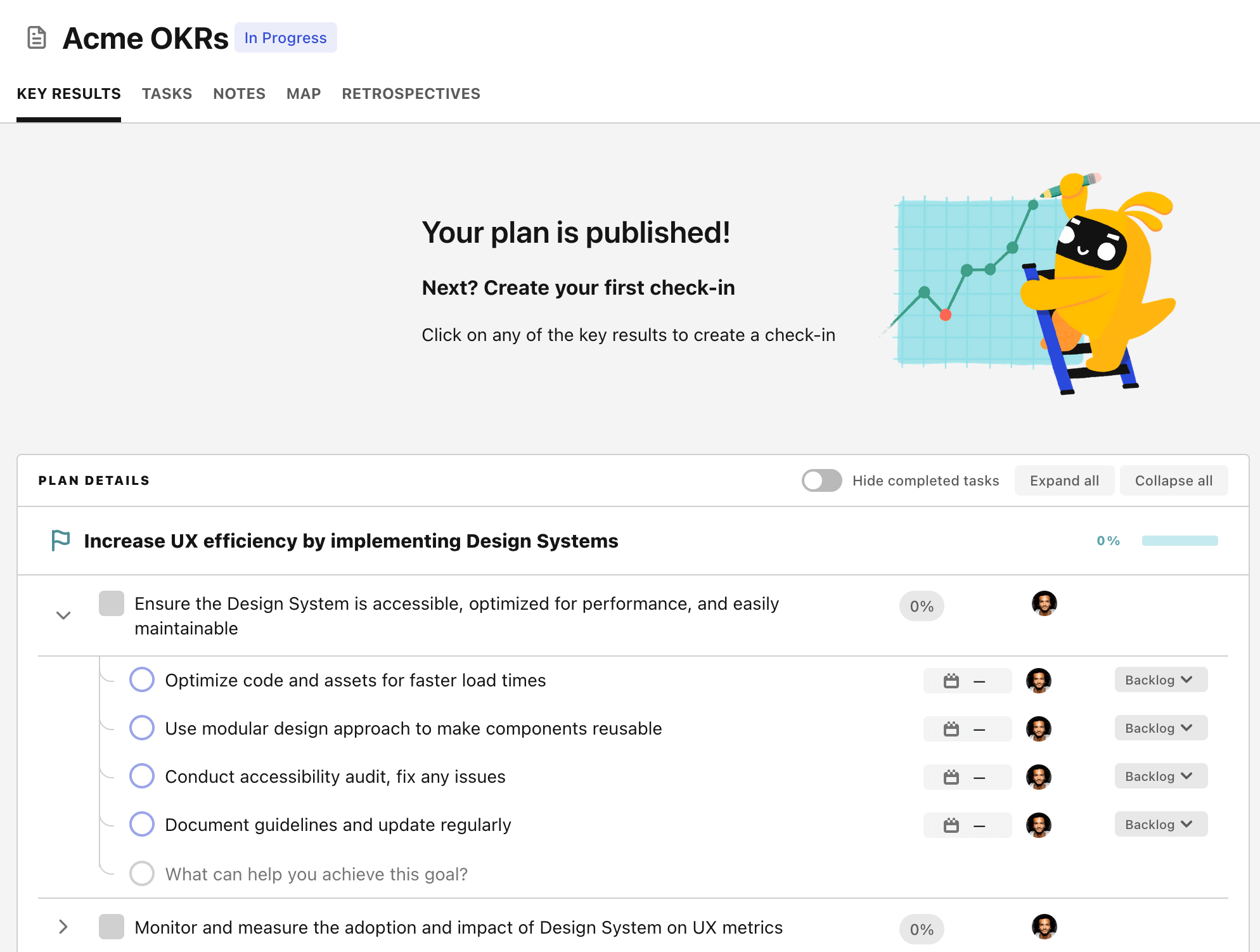OKR template to improve success rate for product changes/releases
Your OKR template
Another success indicator is implementing deployment automation which will curtail manual errors by 40%. This can be achieved by training team members on effective use of automation tools, evaluating error-prone manual steps in the current deployment workflow, and selecting suitable automation tools for deployment procedures.
The third outcome is to attain a 95% success rate for all product alterations/releases. This could be achieved by incorporating user feedback, developing a capable change management team, and executing stringent product testing before launching changes/releases.
This OKR emphasizes on bringing efficiency during product changes/releases, reducing manual errors, and increasing the success rate of product launches which further aids in user satisfaction.
ObjectiveImprove success rate for product changes/releases
KRDecrease rollback rate of changes/releases by 30%
Improve communication and coordination during release planning
Implement stronger pre-release quality assurance measures
Provide engineers with additional training on change management
KRImplement deployment automation to reduce manual errors by 40%
Train team members on how to use the automation tools effectively
Evaluate current deployment workflow for error-prone manual steps
Choose suitable automation tools for deployment processes
KRAchieve a 95% success rate for all product changes/releases
Incorporate user feedback in product changes
Develop a proficient change management team
Implement rigorous product testing before launching changes/releases
How to edit and track OKRs with Tability
You'll probably want to edit the examples in this post, and Tability is the perfect tool for it.
Tability is an AI-powered platform that helps teams set better goals, monitor execution, and get help to achieve their objectives faster.
With Tability you can:
- Use AI to draft a complete set of OKRs in seconds
- Connect your OKRs and team goals to your project
- Automate reporting with integrations and built-in dashboard
Instead of having to copy the content of the OKR examples in a doc or spreadsheet, you can use Tability’s magic importer to start using any of the examples in this page.
The import process can be done in seconds, allowing you to edit OKRs directly in a platform that knows how to manage and track goals.
Step 1. Sign up for a free Tability account
Go tohttps://tability.app/signup and create your account (it's free!)
Step 2. Create a plan
Follow the steps after your onboarding to create your first plan, you should get to a page that looks like the picture below.

Step 3. Use the magic importer
Click on Use magic import to open up the Magic Import modal.
Now, go back to the OKR examples, and click on Copy on the example that you’d like to use.

Paste the content in the text import section. Don’t worry about the formatting, Tability’s AI will be able to parse it!

Now, just click on Import from text and let the magic happen.

Once your example is in the plan editor, you will be able to:
- Edit the objectives, key results, and tasks
- Click on the target 0 → 100% to set better target
- Use the tips and the AI to refine your goals
Step 4. Publish your plan
Once you’re done editing, you can publish your plan to switch to the goal-tracking mode.

From there you will have access to all the features that will help you and your team save hours with OKR reporting.
- 10+ built-in dashboards to visualise progress on your goals
- Weekly reminders, data connectors, and smart notifications
- 9 views to map OKRs to strategic projects
- Strategy map to align teams at scale